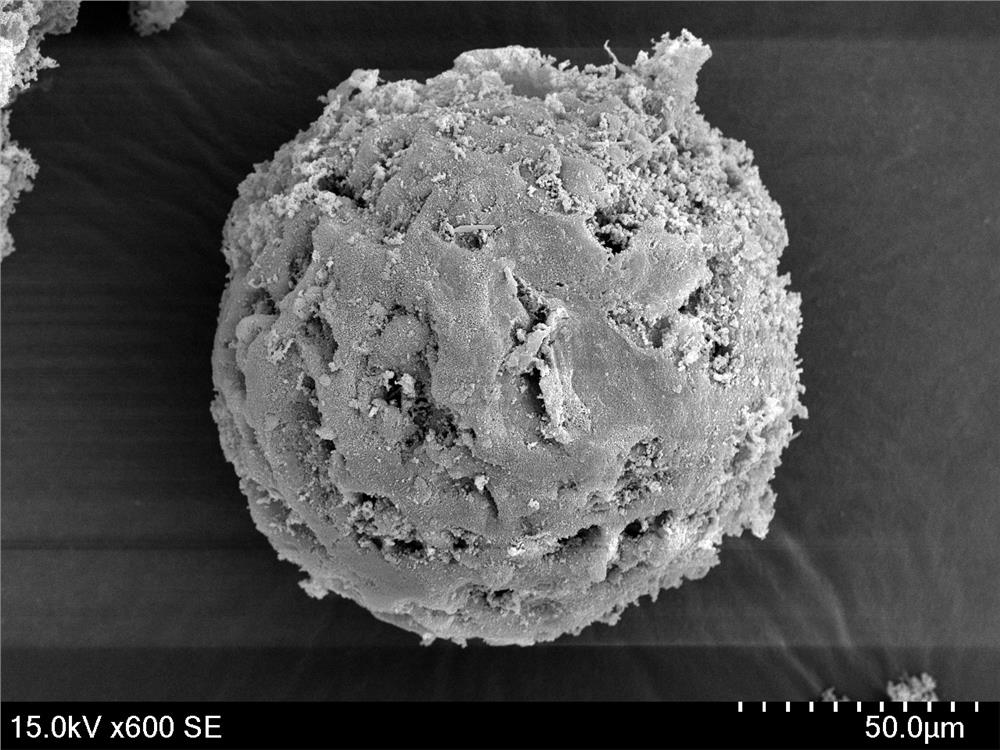Novel method for preparing super-macroporous cellulose microspheres
A technology of cellulose microspheres and a new method, applied in the field of materials, can solve the problems that the template method is easy to generate closed pores, difficult to build large pores, and the preparation process is cumbersome, etc., and achieves the effects of large application potential, low cost, and easy availability of raw materials.
- Summary
- Abstract
- Description
- Claims
- Application Information
AI Technical Summary
Problems solved by technology
Method used
Image
Examples
Embodiment 1
[0024] Dissolve 5g of cellulose in NaOH / urea solution to form a transparent colorless cellulose solution with a concentration of 4~6wt%; after centrifuging and degassing the resulting solution, take 20mL of this solution as the dispersed phase, mix 1.5g of Span80 and 1g of Tween60 Add it to 60mL white mineral oil and add it as the continuous phase, and use the emulsification method to prepare an emulsion containing cellulose droplets; place the emulsion at 25°C for 10 hours, and at the same time perform magnetic stirring at 1500 rpm; heat the emulsion obtained in the previous step to 70 ℃ or adding 5% acidic solution to prepare regenerated cellulose microspheres.
Embodiment 2
[0026] Dissolve 5g of microcrystalline cellulose in -5°C sodium hydroxide / urea 95mL solution to obtain a transparent and colorless viscose solution; after centrifuging and degassing the obtained solution, use a syringe to draw 1mL of this solution as a dispersed phase, and fix it in the injection Pump, use a syringe to absorb 5mL white mineral oil and add surfactants 0.25gSpan80 and 0.15gTween60 as the continuous phase, fix it on another syringe pump, use a T-shaped microfluidic device, and place the liquid outlet in 50mL of 5% Span80 In the white mineral oil solution, the emulsion containing cellulose droplets with different particle sizes was prepared by adjusting the two-phase flow rate; the emulsion was placed in an environment of 20 ° C for 8 hours, and magnetic stirring was performed at 2000 rpm at the same time; then 5% acidic solution was added to prepare regenerated cellulose microspheres.
PUM
 Login to View More
Login to View More Abstract
Description
Claims
Application Information
 Login to View More
Login to View More - R&D Engineer
- R&D Manager
- IP Professional
- Industry Leading Data Capabilities
- Powerful AI technology
- Patent DNA Extraction
Browse by: Latest US Patents, China's latest patents, Technical Efficacy Thesaurus, Application Domain, Technology Topic, Popular Technical Reports.
© 2024 PatSnap. All rights reserved.Legal|Privacy policy|Modern Slavery Act Transparency Statement|Sitemap|About US| Contact US: help@patsnap.com








